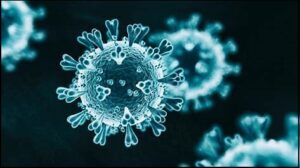 By Dick Hall-Sizemore
By Dick Hall-Sizemore
There is a fierce debate going on in this country. One side is anxious to ease the restrictions imposed on the population in an effort to slow the spread the coronavirus and “open up the economy.” The other side, concerned about a resurgence of the disease and related deaths, wants to go slower.
Underlying this debate is the question of the economic damage resulting from the shutdowns and stay-at-home orders. The President says, “We cannot let the cure be worse than the problem itself.” Many commenters on this blog voice the same sentiment.
Implicit in these arguments is the assumption that, at some point, the cost to the economy outweighs the value of the lives lost. No one really wants to admit this because that would be putting a value on human life, which is morally anathema.
It turns out that economists have come up with a way of estimating the value of human life. (Who other than those purveyors of “the dismal science” would do this?) It is called the Value of a Statistical Life (VSL). It is described as the amount people are willing to spend to cut risk enough to save one life. Another summation of the measure is the “economically correct measure of the benefit individuals receive from enhancements to their health and safety.” It turns out that, in the United States, that amount is about $10 million per life. For a discussion of the concept and the methodology behind it see here. (Don’t ask me to explain or defend the statistics!)
This is not just an academic concept dreamed up by some economists as a mental exercise. It has “become the most important economic parameter for the evaluation of U.S. government regulations.”
The Washington Post has reported that two sets of economists have conducted cost-benefit analyses of the country’s efforts to limit the spread of the coronavirus, using VSL. Basically, they were asking, “Is the damage to the economy worth it in terms of lives saved?” They found that it was. Economists at the University of Wyoming estimated the economic benefits from the lives saved outweighed the projected damage to the economy by $5.2 trillion. An analysis by a couple of economists from the University of Chicago concluded that the “mortality benefits of social distancing are about $8 trillion” in the United States. (The University of Chicago study even adjusted the VSL for age, with the VSL value decreasing with age.)
There are lots of problems with these studies and any studies like them:
- What we can’t know—Because researchers cannot run a controlled experiment (this state has stay-at-home orders; this one does not), the baseline assumptions cannot be known definitely. We do not know how many people would have died if there had not been any efforts to control the spread of the coronavirus. Many analysts believe that the “official” COVID-19 death toll is understated. Therefore, we may not know how many people the disease killed. We do not know what the GDP would have been if the coronavirus had not emerged. Nor can we know what it would have been if there had been no effort to control the spread of the disease. Finally, we still do not know the extent of the decrease in GDP in the present environment. All we have are projections and some of those are controversial.
- Timing—These two studies were published in March. We know a lot more about the coronavirus now than we did then. Deaths have been lower that the assumptions used in these studies. The decrease in GDP is not yet known and may be higher than assumed in the studies.
- Limitation of GDP—GDP is one measure of the cost of the mitigation measures. There are other societal costs that are not captured by GDP. Commenters on this blog have pointed out some of these: lost time in school for low-achieving students, mental health stress, possible increase in domestic violence, substance abuse, among others. It is difficult to quantify these costs.
- Variations—The measures taken to slow the spread of the virus varied among states. The number of deaths vary greatly among states and even among regions within states. Therefore, the costs likely outweigh the VSL benefits in some areas of the country.
As imperfect as they are, cost-benefit analyses such as these (which conservatives usually embrace) provide a different perspective in the debate. More importantly, they could provide policymakers an objective tool to use in making their decisions. Otherwise, we continue to operate on educated guesses and partisan hype.


